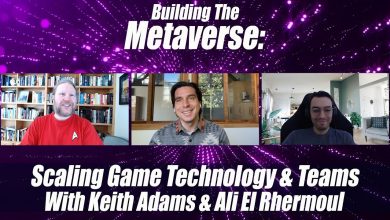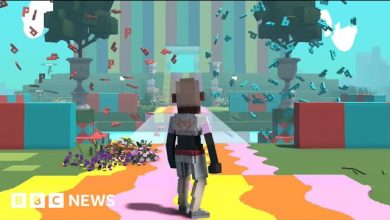Real World Metaverse Strategies for Scottish Digital Tourism
Destinations can use technologies like Virtual and Augmented Reality to create immersive tourism experiences.
 In a previous blog John Hanke, creator of the Pokemon Go app, defines the ‘Real World Metaverse’, a concept of enhancing reality through overlaying it with Augmented Reality features.
In a previous blog John Hanke, creator of the Pokemon Go app, defines the ‘Real World Metaverse’, a concept of enhancing reality through overlaying it with Augmented Reality features.
These can be applied in a practical way to boost success for Scottish businesses. Tourism is a great example.
Enhancing the experience with these types of exciting innovations will draw in even greater visitor numbers and continue the massive economic success of this industry.
This Conversation article comments on the details of this economic success and the critical role immersive experiences can play in facilitating this boost.
Simple examples include AR tourism guides, such as this one for Inverness Castle, and for Loch Lomond they inserted ‘Zapcodes’ into the local guide magazine, to trigger AR links that enhance the printed word with a virtual experience. You can discover Fife and discover the Highlands via AR.
Another great example is described in this recent news, about Blair Castle adopting the Smartify app. Via easy-to-use interfaces and well designed technology available as a native and web app, the Smartify guide allows visitors to follow their own interests and curated tours, with additional features such as e-commerce, targeted push notifications and donations.
Other Scottish venues adopting Smartify include the National Galleries of Scotland. The Smartify case study explains how the venue employed the app for their Ray Harryhausen exhibition, to offer visitors a fun (and COVID-safe) experience on site, as well as access from home.
Virtual Treasure Hunts
As we consider larger Pokemon Go-type Real World Metaverse strategies, for more advanced and engaging experience the technology can be combined with features like ‘Gamification’, to enable super fun activities like Virtual Treasure Hunts. As the Conversation article highlights:
“It’s the sort of immersive experience that many tourist attractions want to have these days. At the Burns Birthplace Museum in Ayrshire, dedicated to Robert Burns, visitors can download an app aimed at children called the Mighty Mission Trail. It sends them on a virtual treasure hunt throughout the site and surroundings.”
This highlights the other types of technologies that can be called into play. For example Google Maps Gaming provides a capability for making more use of location data in mobile games, the Pokemon Go type, that can ‘can unlock augmented reality and social gameplay, can increase engagement and retention, and can help bring new life to games that were originally designed without a location component.’
This is complimented by their general capabilities for improving navigation, such as AR Navigation and harnessing AI for Global Navigation, helping you to better navigate cities.
These various innovations provide the building blocks for creating any type of highly immersive, highly engaging experience, that better enables visitors to explore and enjoy attractions, with the ability to ‘gamify’ the experience of particular value for those looking to attract children and young families.
Whereverly
An example of a Scottish innovator in this field is Whereverly. They develop apps and web platforms that make journeys memorable and allow users to embrace local culture through music, song and stories, whilst discovering hidden gems.
The apps blend together local storytelling with engaging interactivity, from songs to driving routes, with projects delivered for the North Coast 500, Explore Stirling and Highland Discovery.
Recently they launched Badenoch The Storylands, where users can discover the past through the interactive Augmented Reality reconstructions of Badenoch’s fantastic historic sites.
As part of the last CivTech innovation competition they successfully bid a new solution to to better manage visitors at tourist hotspots, combining IoT data and mobile tech to give public sector rangers access to a live map of remote attractions, improving public safety and engagement.



